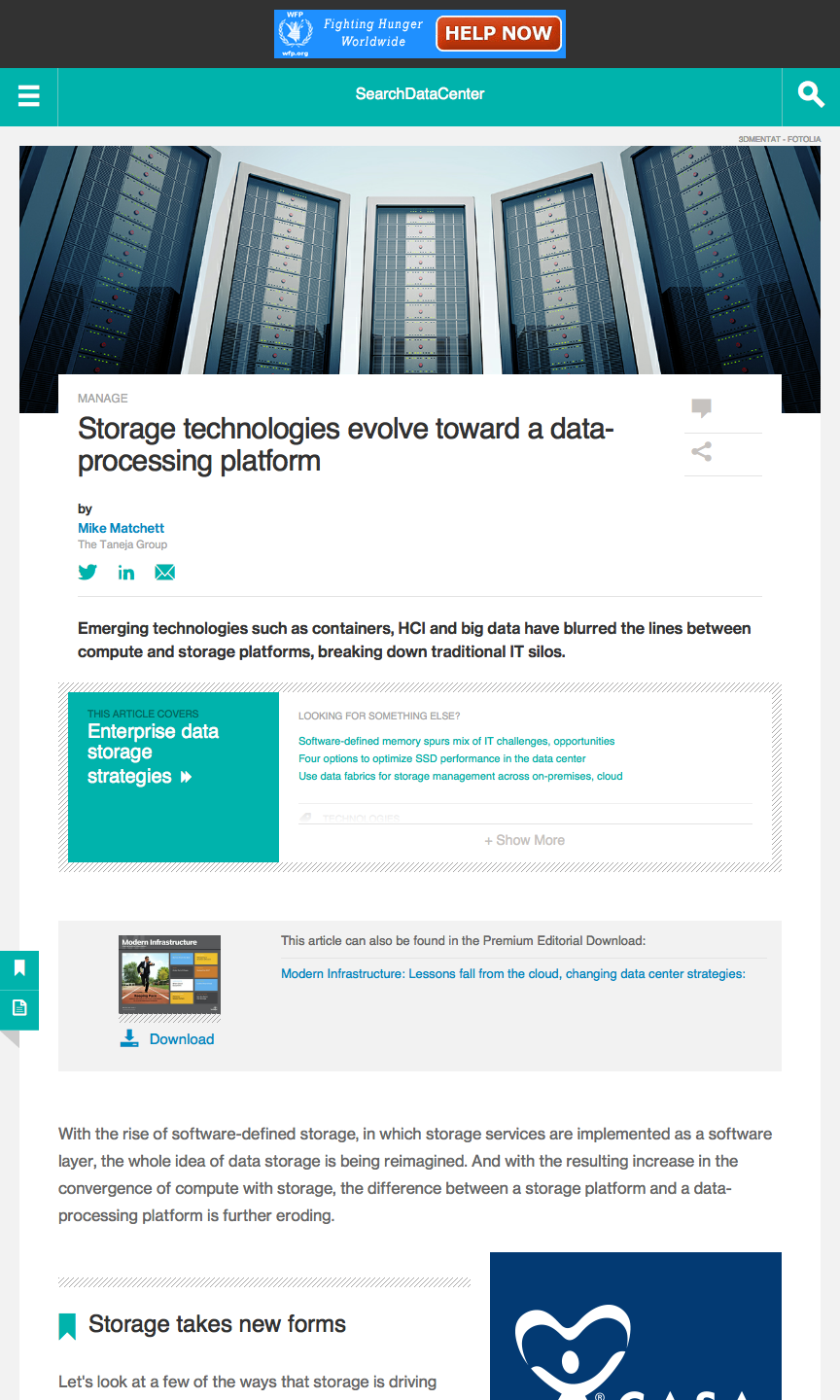Storage technologies evolve toward a data-processing platform

An IT industry analyst article published by SearchDataCenter.
 Emerging technologies such as containers, HCI and big data have blurred the lines between compute and storage platforms, breaking down traditional IT silos.
Emerging technologies such as containers, HCI and big data have blurred the lines between compute and storage platforms, breaking down traditional IT silos.
Mike Matchett
With the rise of software-defined storage, in which storage services are implemented as a software layer, the whole idea of data storage is being re-imagined. And with the resulting increase in the convergence of compute with storage, the difference between a storage platform and a data-processing platform is further eroding.
Storage takes new forms
Let’s look at a few of the ways that storage is driving into new territory:
- Now in containers! Almost all new storage operating systems, at least under the hood, are being written as containerized applications. In fact, we’ve heard rumors that some traditional storage systems are being converted to containerized form. This has a couple of important implications, including the ability to better handle massive scale-out, increased availability, cloud-deployment friendliness and easier support for converging computation within the storage.
- Merged and converged. Hyper-convergence bakes software-defined storage into convenient, modular appliance units of infrastructure. Hyper-converged infrastructure products, such as those from Hewlett Packard Enterprise’s SimpliVity and Nutanix, can greatly reduce storage overhead and help build hybrid clouds. We also see innovative approaches merging storage and compute in new ways, using server-side flash (e.g., Datrium), rack-scale infrastructure pooling (e.g., Drivescale) or even integrating ARM processors on each disk drive (e.g., Igneous).
- Bigger is better. If the rise of big data has taught us anything, it’s that keeping more data around is a prerequisite for having the opportunity to mine value from that data. Big data distributions today combine Hadoop and Spark ecosystems, various flavors of databases and scale-out system management into increasingly general-purpose data-processing platforms, all powered by underlying big data storage tools (e.g., Hadoop Distributed File System, Kudu, Alluxio).
- Always faster. If big is good, big and fast are even better. We are seeing new kinds of automatically tiered and cached big data storage and data access layer products designed around creating integrated data pipelines. Many of these tools are really converged big data platforms built for analyzing big and streaming data at internet of things (IoT) scales.
The changing fundamentals
Powering many of these examples are interesting shifts in underlying technical capabilities. New data processing platforms are handling more metadata per unit of data than ever before. More metadata leads to new, highly efficient ways to innovate …(read the complete as-published article there)
